







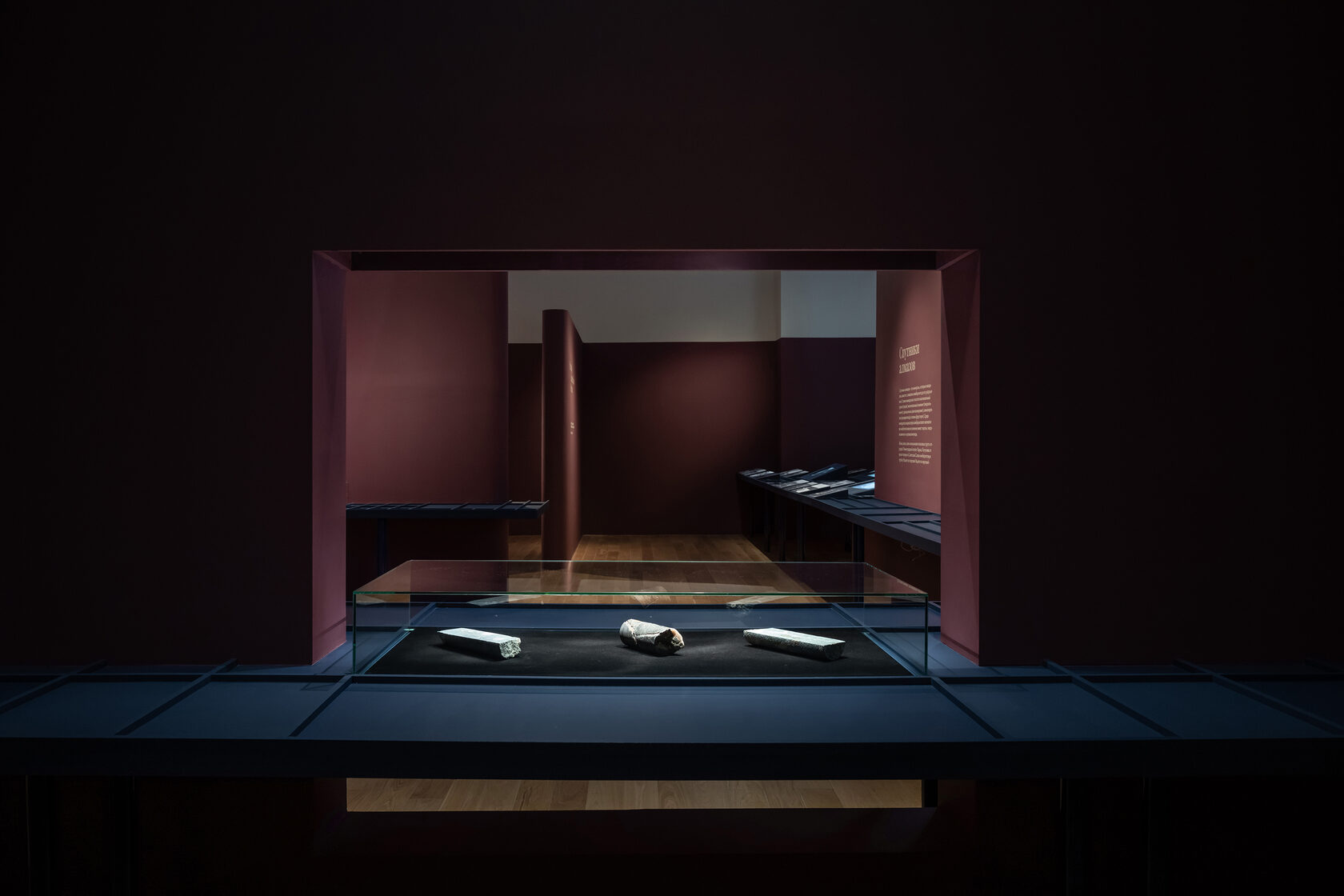
The way
of a diamond
of a diamond
Corporate & Public
Story
The first diamond deposits in Russia were discovered by geologists in the middle of the 20th century in Yakutia, an amazing northern region where the temperature in winter drops below 60◦. Today about every fourth diamond in the world is mined in these places. The exhibition tells the visitor about the properties of natural diamonds, where they are mined, and how in human hands they become real masterpieces of jewelry art. The central place at the exhibition is occupied by "adamant" and "diamond" expositions, as well as exclusive collections of jewelry.
The unique properties of diamonds, first of all their incredible hardness, are widely used in various industries, but the main field of their application has been and remains jewelry art. The process of diamond cutting has been perfected over centuries. The famous "Russian cut" is considered to be the pinnacle of craftsmanship - diamonds with a classic round shape and perfect proportions. Despite the introduction of new technologies, the key role in the complex and labor-intensive cutting process is still played by the skill of the diamond cutter
Project
Corporate & Public
Type
State Historical Museum
Place
Red Square, 1, Moscow
Address
State Historical Museum
Initiator
Olga Churakova
Curator
600 sq.m
Area
>100 pieces
Number of exhibits
Peter Tolpin, Anna Manzarova, Anara Khairusheva
Team
Ilya Ivanov
Photo

Temporary exhibition plan
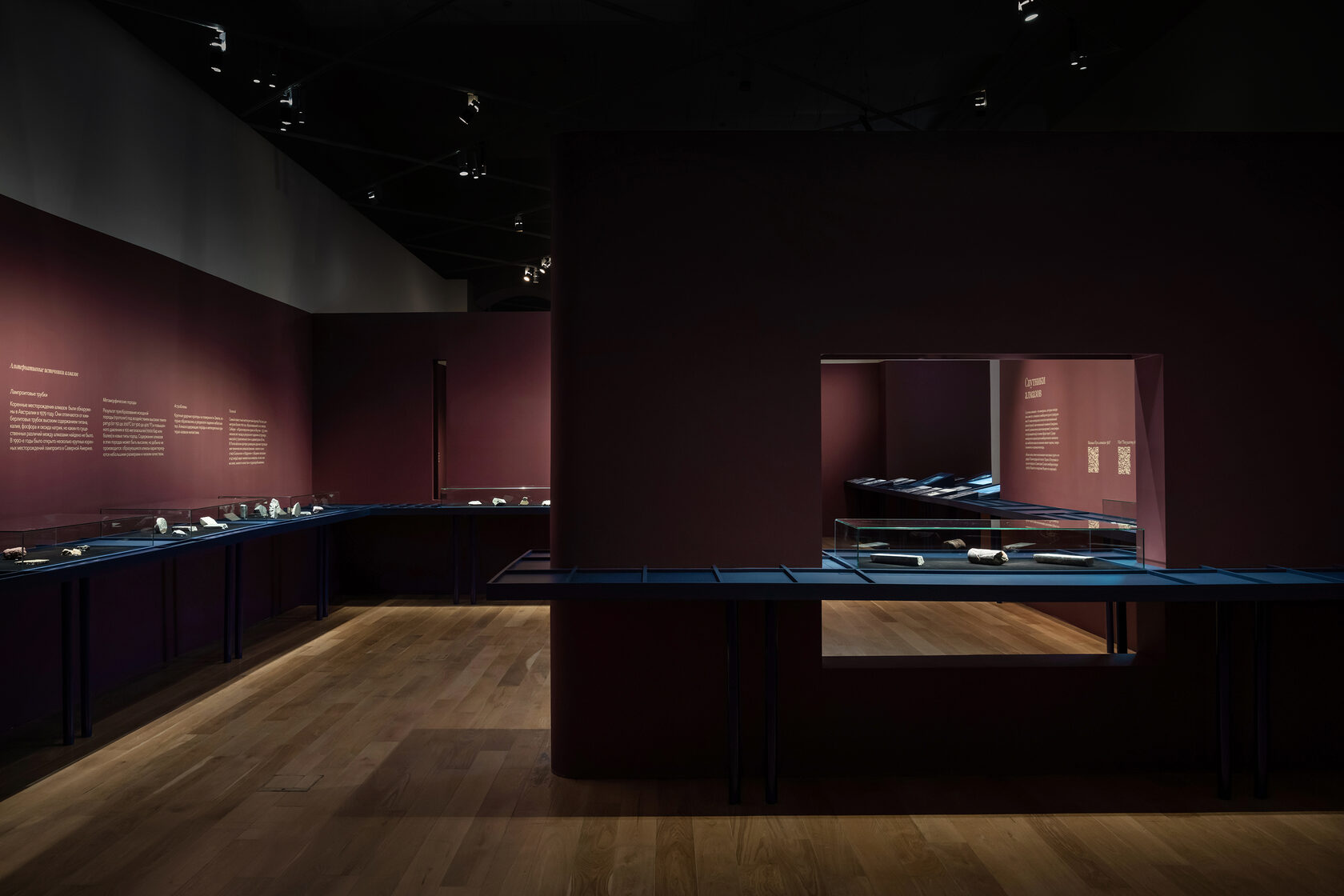
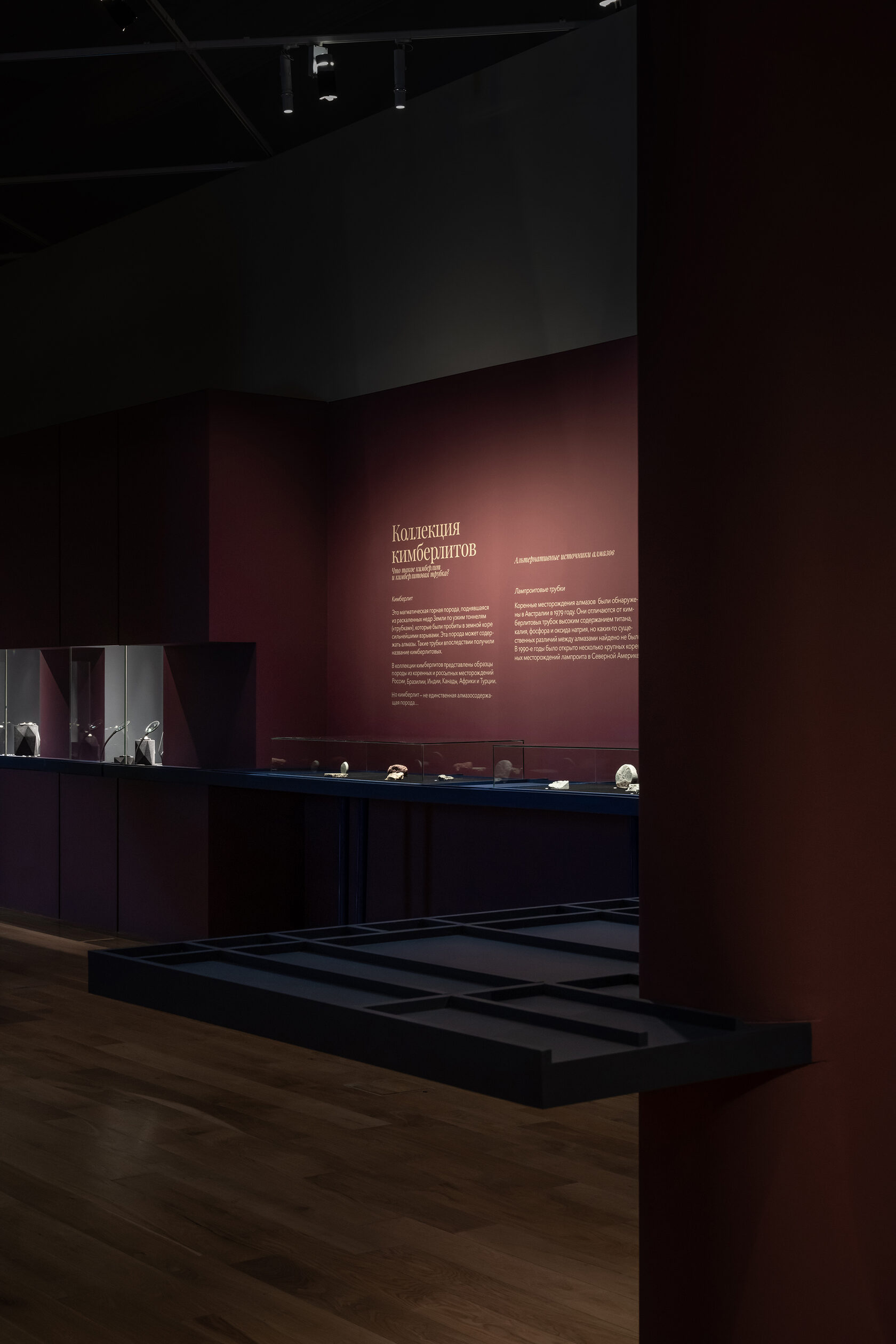
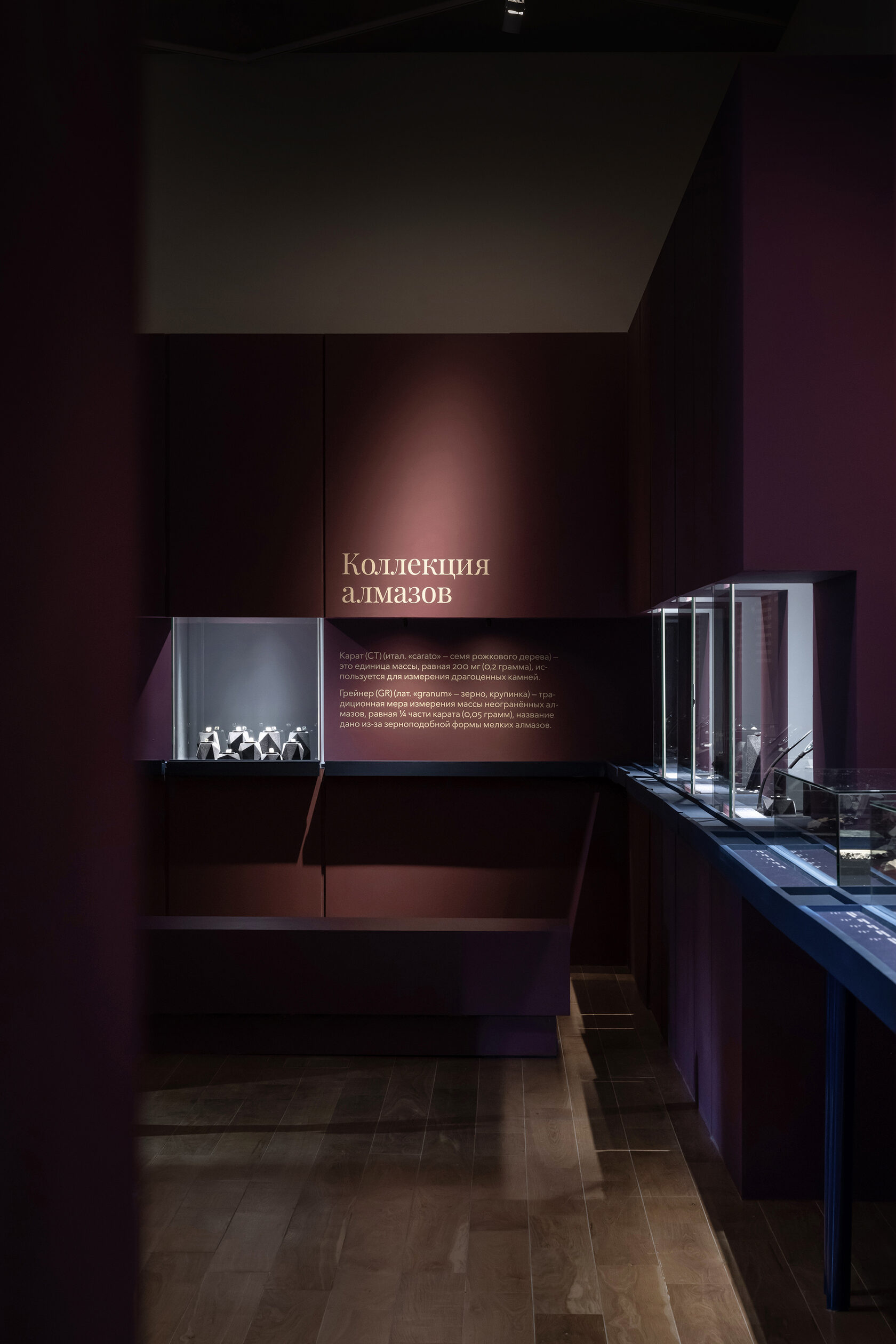
"Diamonds have been called 'shatters of stars' and 'frozen tears of the gods'. These amazing crystals, created by nature itself, have been attracting people with their magical beauty for centuries. As part of our exhibition, we will show the entire journey a diamond goes through from the moment it is mined to its transformation into a shining diamond and beautiful piece of jewelry"
CEO of the Historical Museum, Alexey Levykin

Temporary exhibition axonometry
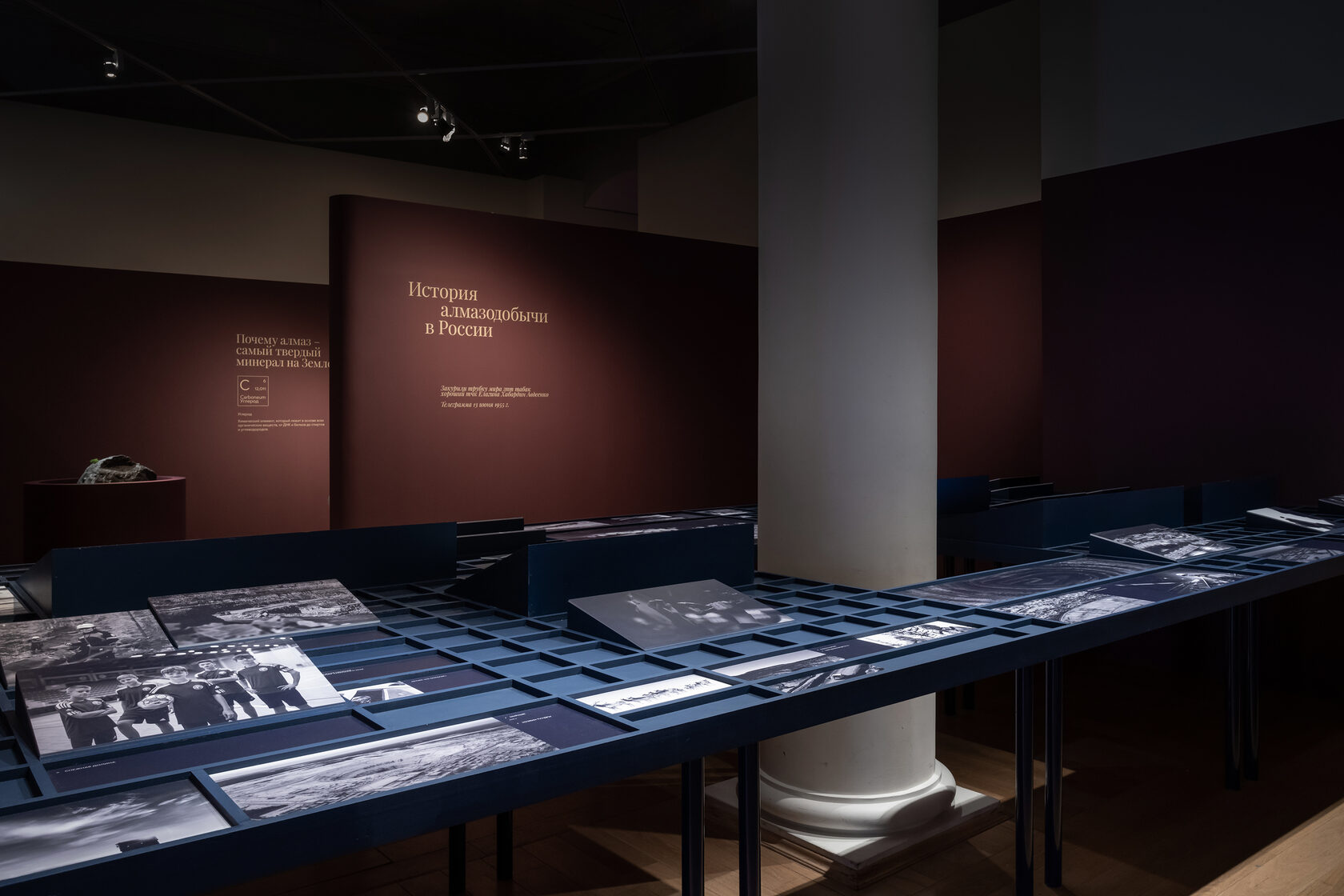
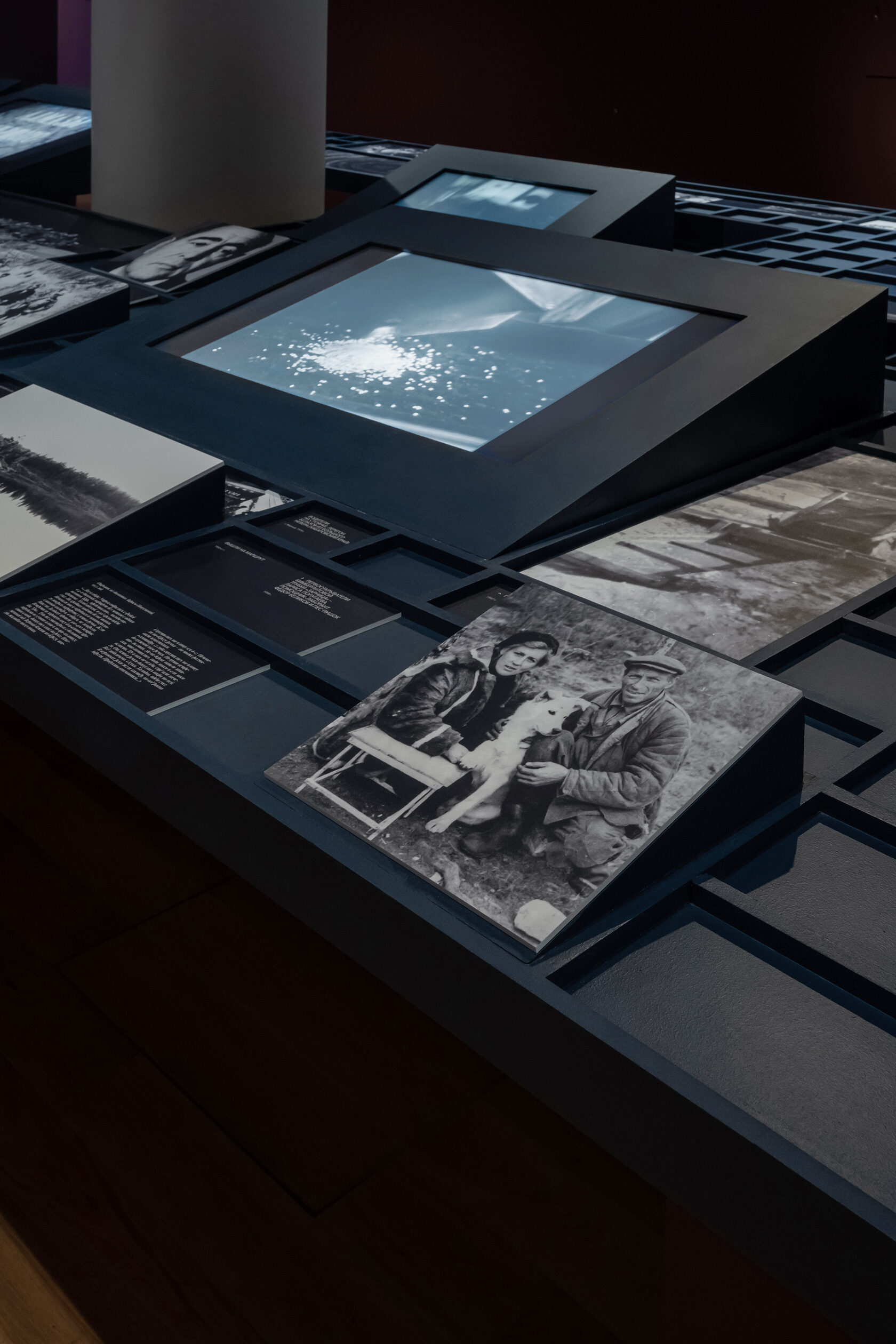
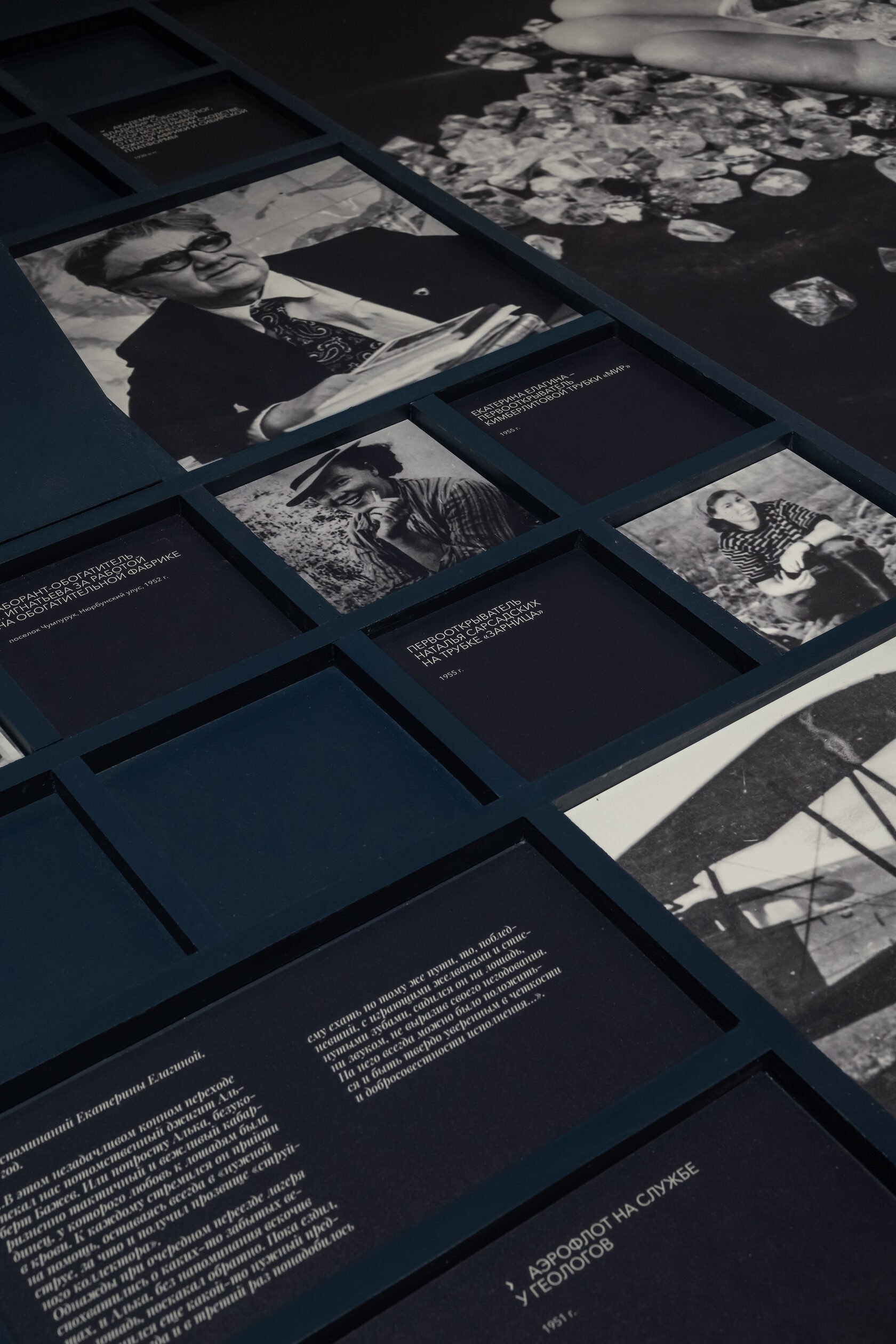

Construction principle: main display case for historic materials
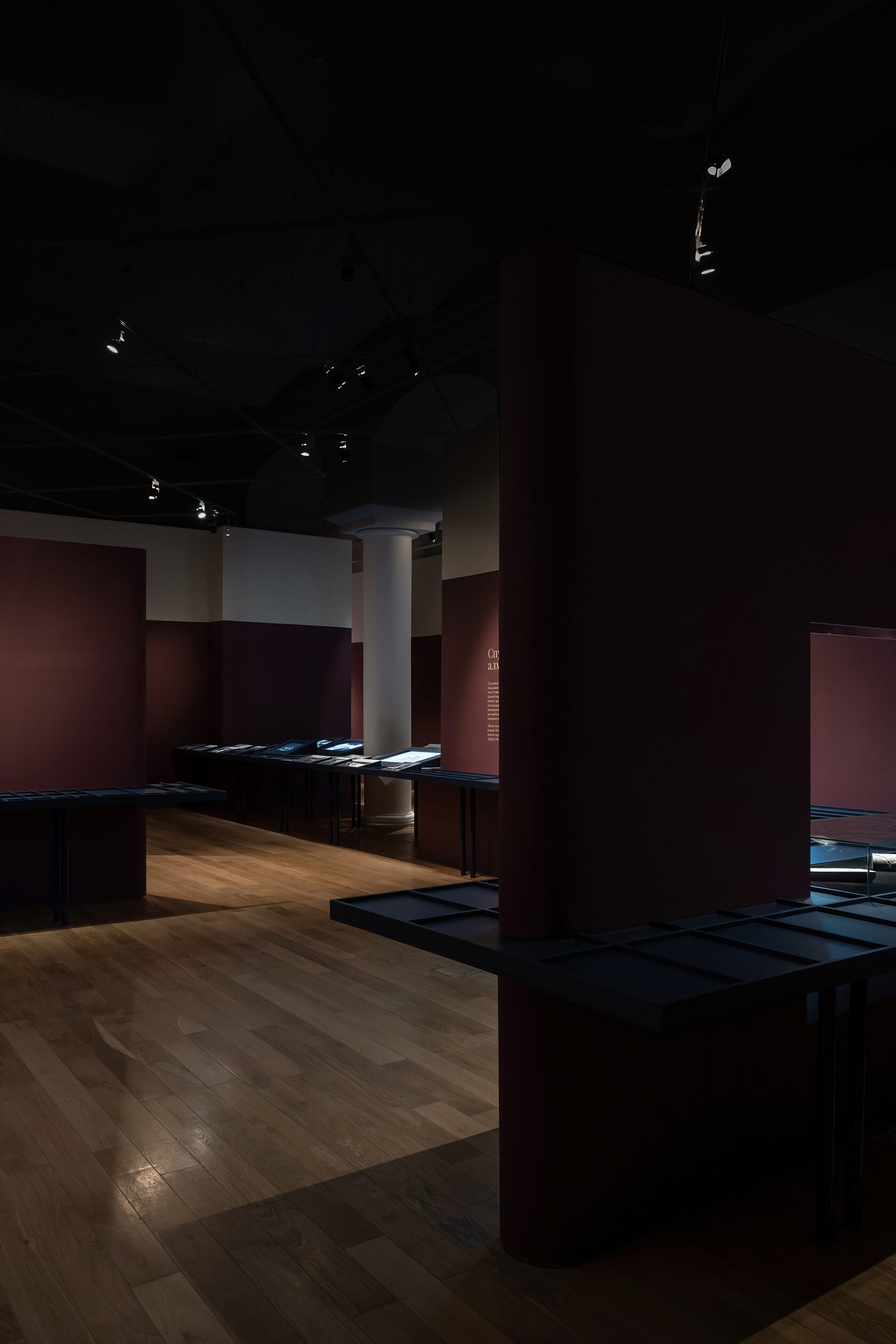
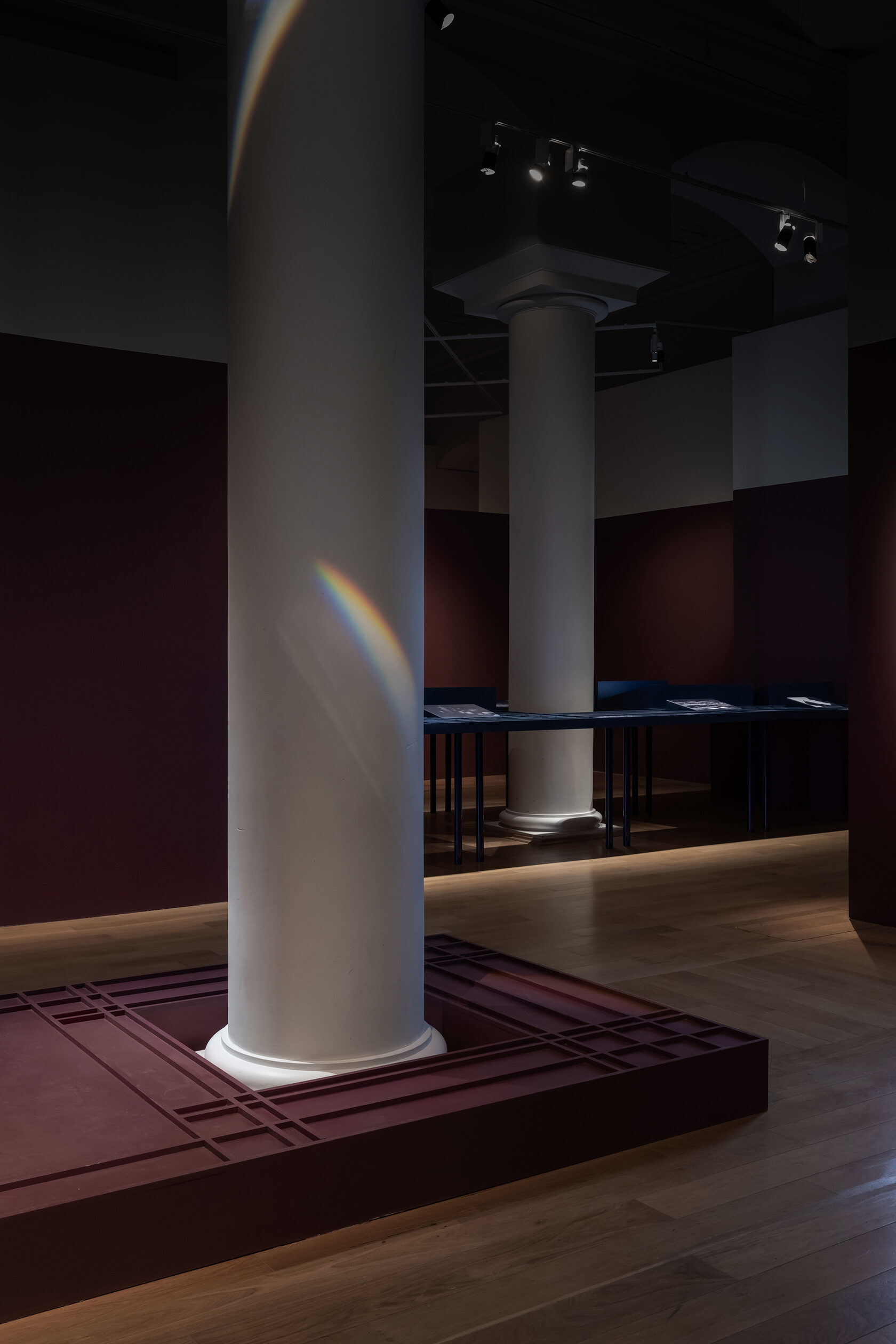
"For this exhibition, we have collected 60 of the rarest and most amazing diamonds mined throughout the company's history. Firstly, these are large and colored crystals, most of which are named - the fact of their mining was given the names of prominent people or events. Secondly, diamonds with unique morphology - very rare, amazing shapes that are of interest not only to professional gemologists. Including the famous Matryoshka diamond, which received such a name due to its unique feature: another gemstone moves freely inside a larger diamond".
Chief expert and curator of the exhibition, Lyudmila Demidova
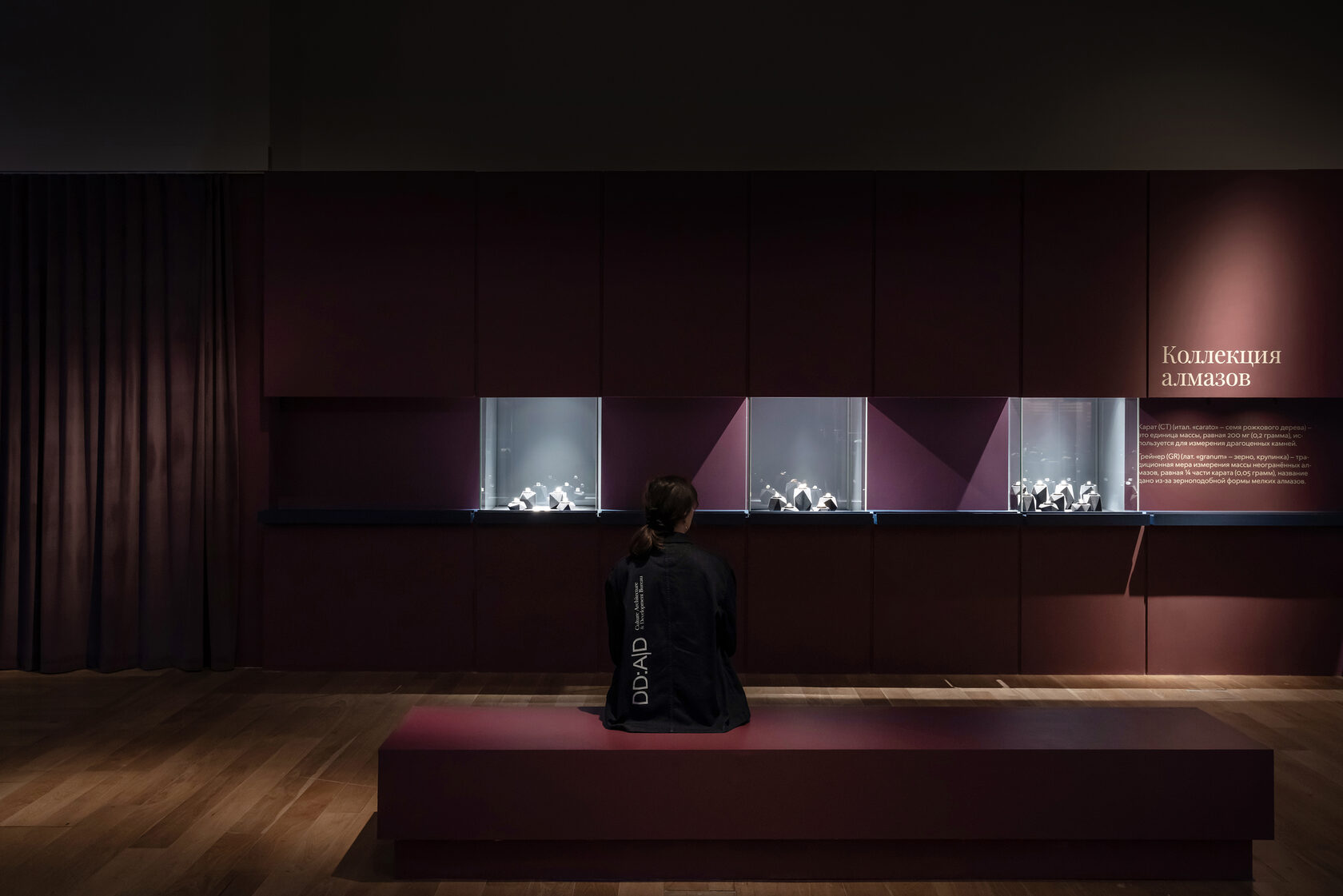
Visual communication
For the project our team developed a unique design code based on the style of scientific publications of the twentieth century.
Scientific materials and diagrams represent an additional layer of the exposition, designed to describe in, didactic language the nature of the origin of the beauty and uniqueness of the Diamond and the technology of its transformation into a Diamond
Scientific materials and diagrams represent an additional layer of the exposition, designed to describe in, didactic language the nature of the origin of the beauty and uniqueness of the Diamond and the technology of its transformation into a Diamond




Graphite
found in nature in pyrite, granite, and spinel. It is formed at high temperature in volcanic and igneous rocks
found in nature in pyrite, granite, and spinel. It is formed at high temperature in volcanic and igneous rocks
Fullerene
In nature, it has been found in shungite samples from North Karelia, in fulgurites from the USA and India, meteorites and sediments up to 65 million years old
In nature, it has been found in shungite samples from North Karelia, in fulgurites from the USA and India, meteorites and sediments up to 65 million years old
Graphene
Synthesized substance. Physicists described its property in the 1960s. But for the first time it was obtained in 2004. The thinnest material known, the best conductor of heat and ellectricity
Synthesized substance. Physicists described its property in the 1960s. But for the first time it was obtained in 2004. The thinnest material known, the best conductor of heat and ellectricity
Carbon nanotubes
In nature they are formed by incomplete combustion of hydrocarbon, have adsorption properties, capillary effect, hydrophobic
In nature they are formed by incomplete combustion of hydrocarbon, have adsorption properties, capillary effect, hydrophobic

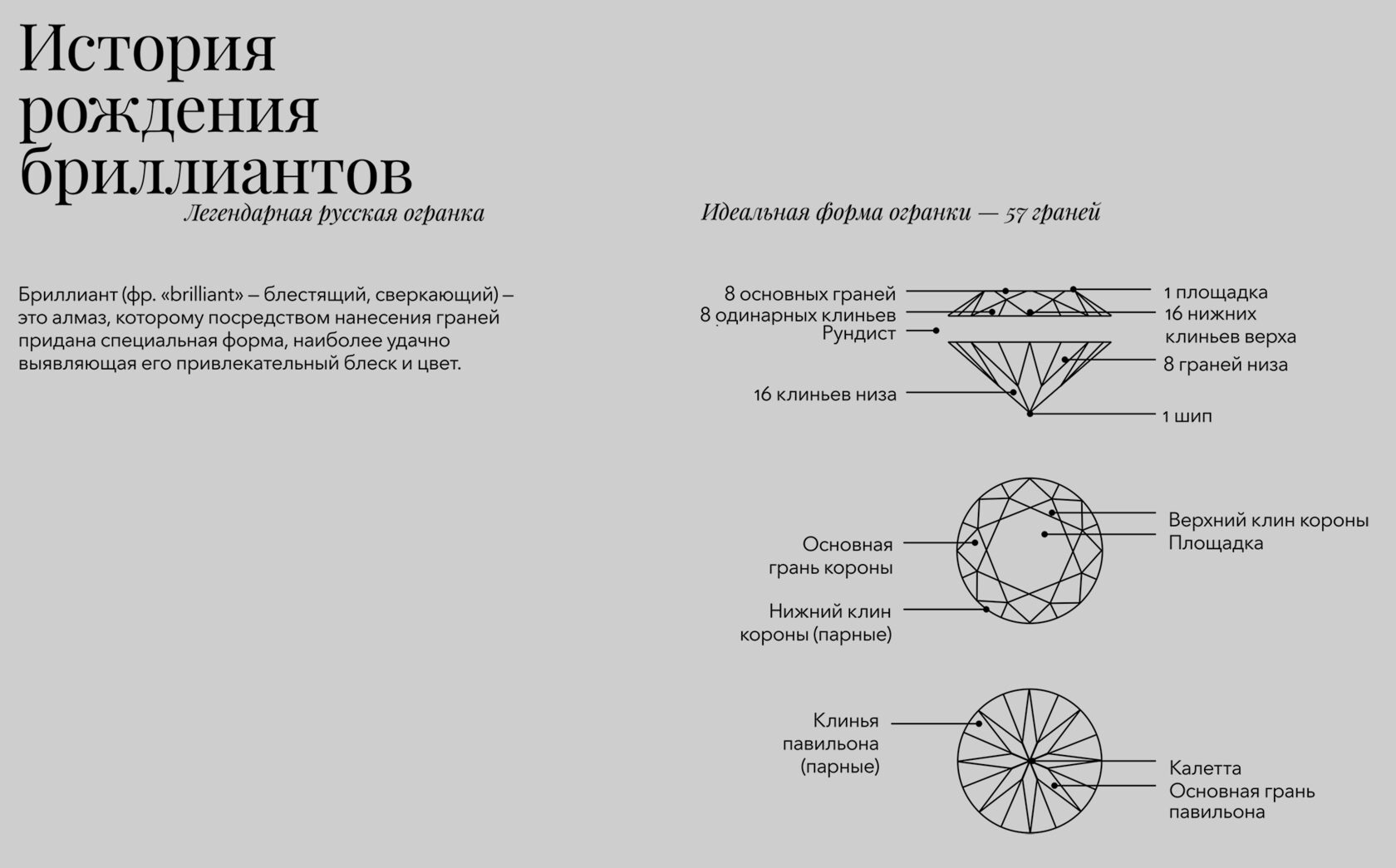
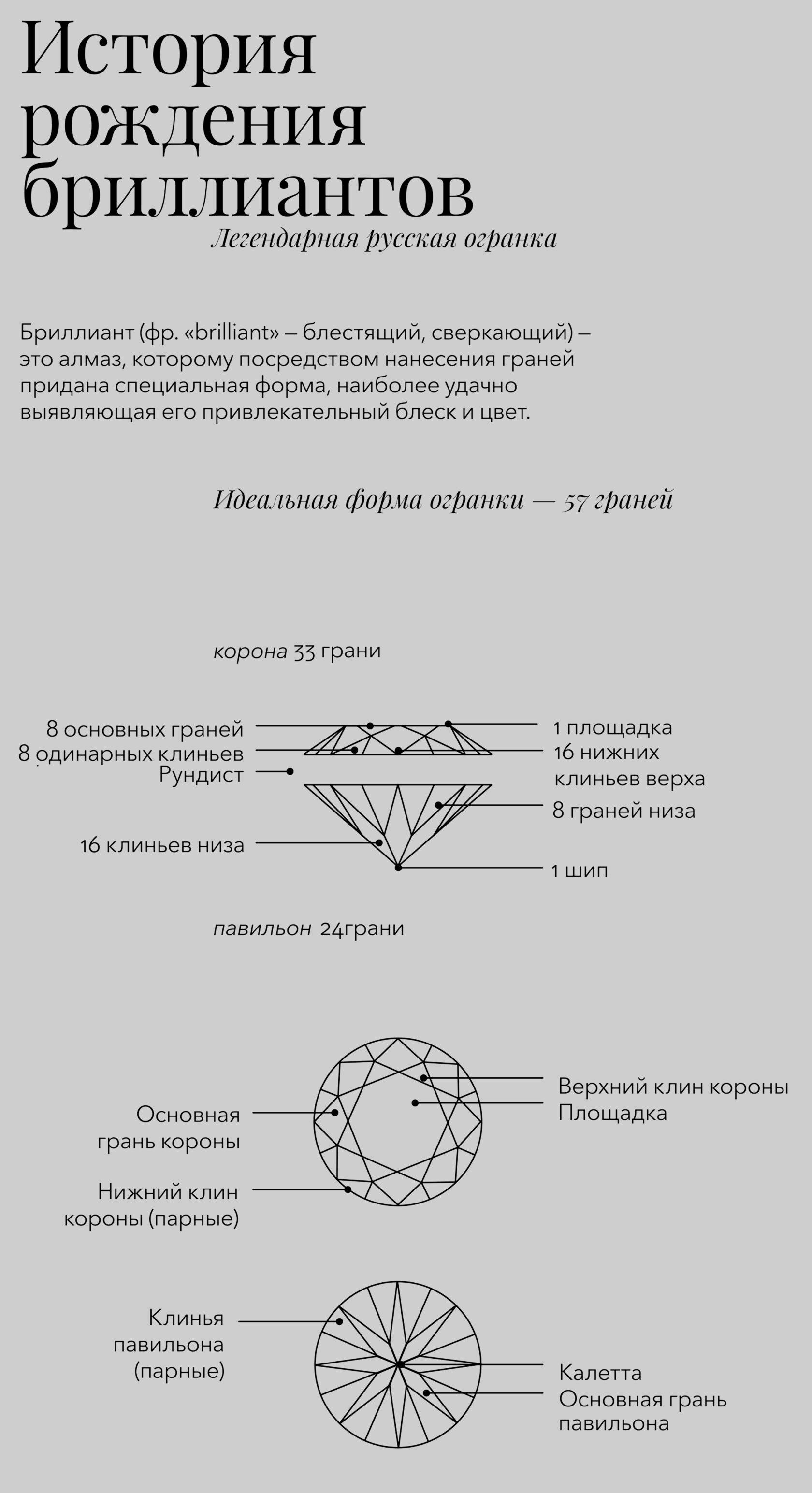
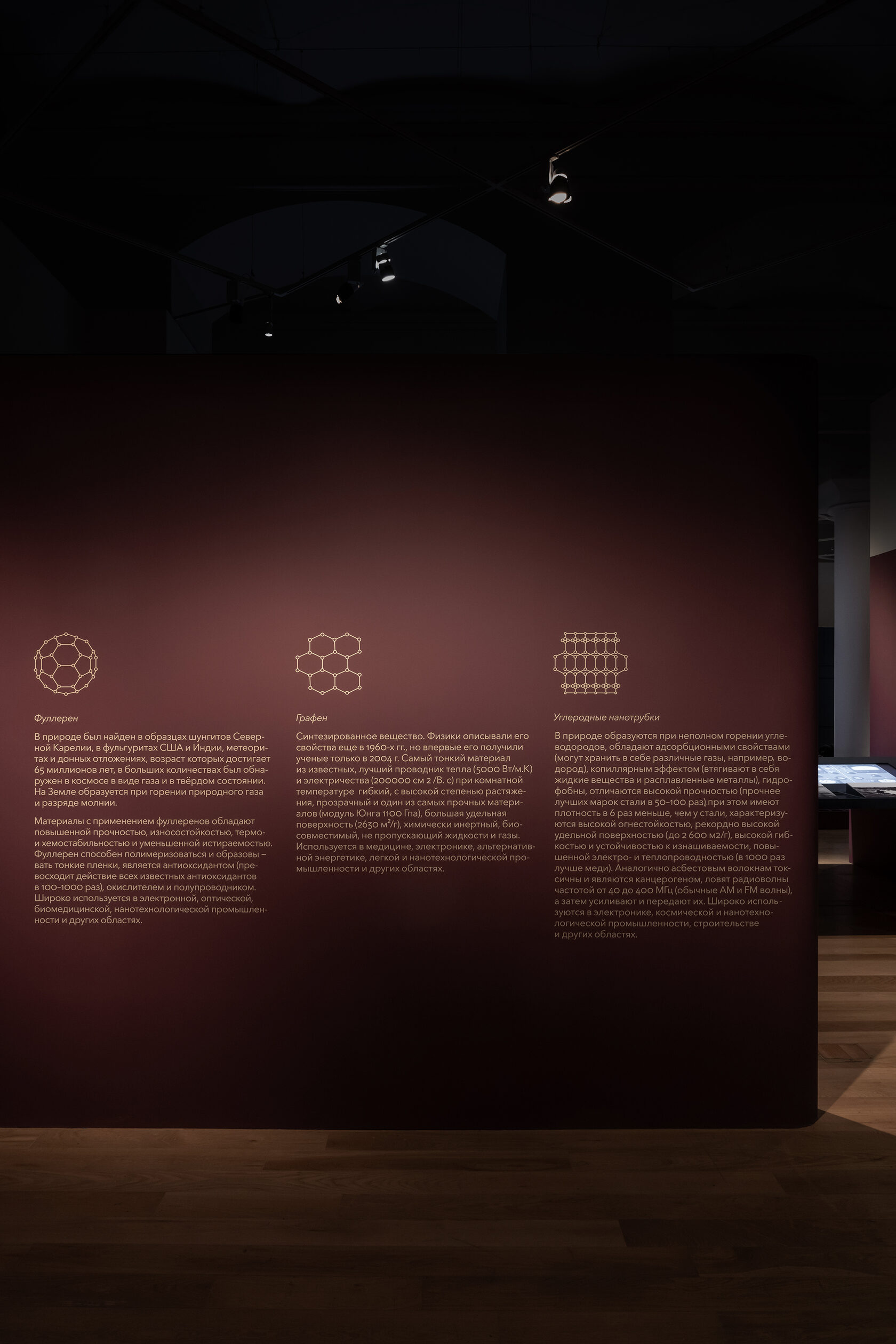
Textual explication principle (Cyrillic lettering)
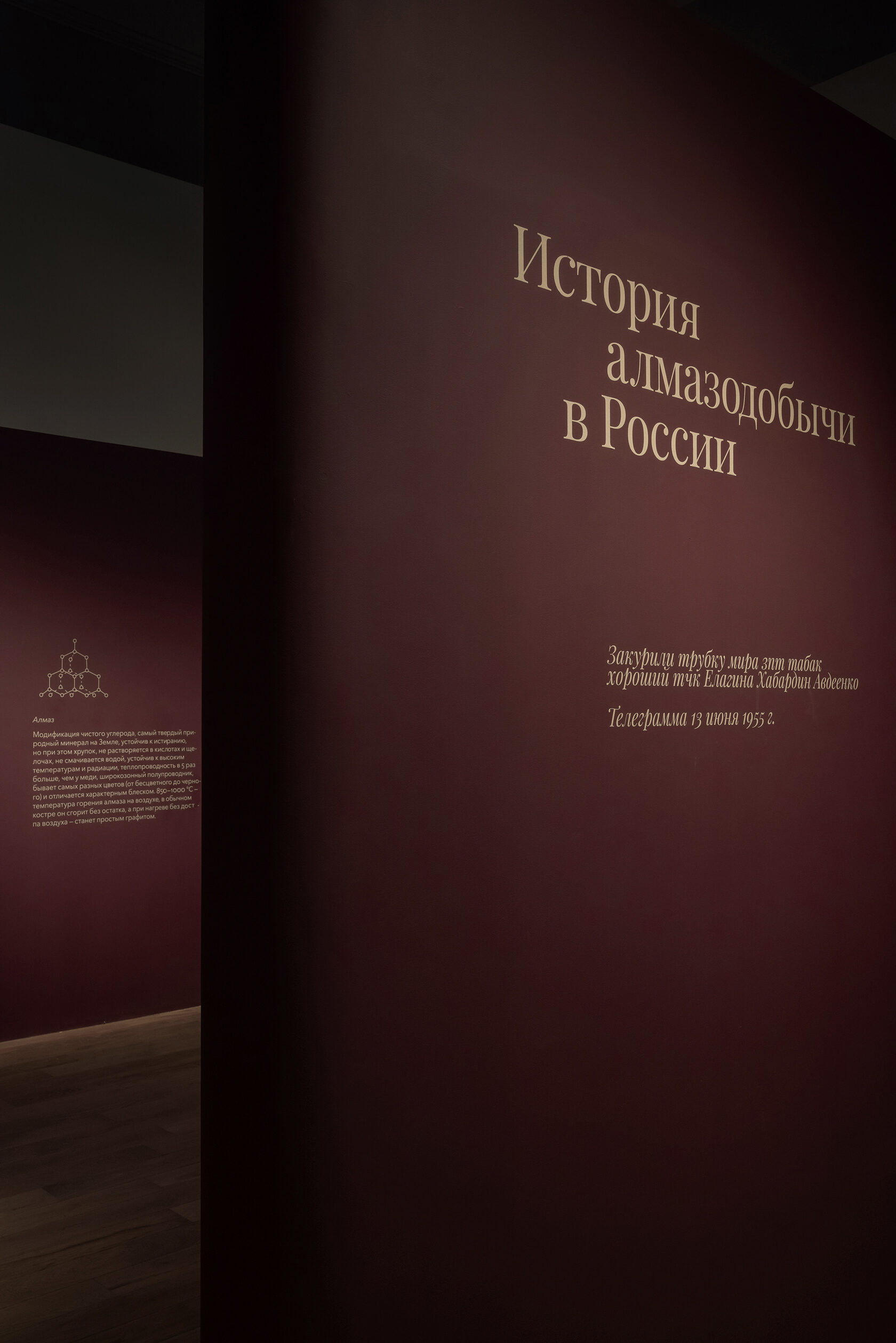
Related projects
year
type
name




